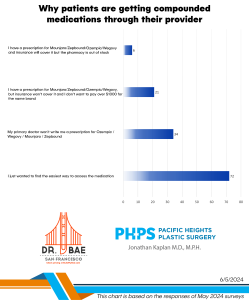Why is price transparency in healthcare so difficult to achieve? If you want a car, you can check the price online or in the papers. Same thing with a house. So what’s so different about providing price transparency in healthcare? If it was easy, someone would’ve done it by now. In one sentence, it’s complicated because of the differing financial incentives of the parties involved. Here’s what I mean.
The Players
 There are four main entities in play when it comes to healthcare price transparency: 1) the insurance company, 2) the doctor, 3) the hospital and 4) the consumer/employer. Let’s start with the consumer/employer. These are interchangeable in the sense that whoever is buying the insurance – the consumer personally or the employer on behalf of the consumer – wants the best price, i.e. lowest monthly premium. To get the lowest monthly premium, you have to get a high deductible health plan. In other words, pay less out of pocket each month but in the event that you need a doctor, you will have to pay from $1000 to $5000 (or more!) before your health insurance plan kicks in.
There are four main entities in play when it comes to healthcare price transparency: 1) the insurance company, 2) the doctor, 3) the hospital and 4) the consumer/employer. Let’s start with the consumer/employer. These are interchangeable in the sense that whoever is buying the insurance – the consumer personally or the employer on behalf of the consumer – wants the best price, i.e. lowest monthly premium. To get the lowest monthly premium, you have to get a high deductible health plan. In other words, pay less out of pocket each month but in the event that you need a doctor, you will have to pay from $1000 to $5000 (or more!) before your health insurance plan kicks in.
While the consumer wants to pay the least, the insurance company wants to make the most (and so does the doctor/hospital but we’ll get to that in a minute). The way the insurance company makes the most is by charging the highest premium, but remember, the consumer/employer doesn’t want to pay the highest premium which is why they get the high-deductible health plan. So the other way for the insurance company to make the most money is to reimburse as little as possible to the doctor or hospital for their services. Essentially, instead of trying to bring in more money through premiums, they just keep more, by paying out less, of what they do bring in.
The doctor and hospital provide care to the consumer. For the services they provide, the doctor and hospital each have to sign a contract with the insurance company to get paid for those services and that money flows from the consumer/employer’s premiums through the insurance company and finally to the doctor/hospital. In this contract, the doctor and hospital agree to a negotiated rate for various services. A “negotiated rate” is a euphemism for reduced payments to the doctor and hospital. Basically, in exchange for accepting lower payments for services provided, the doctor and hospital will preferentially receive the insurance company’s patients. But in this game of supply and demand, the doctor and hospital also want to bring in the most revenue for their services.
Negotiated Rates
So what does this have to do with the complexity in price transparency? The insurance company wants to retain as many of their premium dollars as possible. The consumer/employer tries to pay the lowest premium. The doctors and hospitals try to capture as many of those premium dollars. With these contradicting financial incentives, you get a tug of war during contract negotiations over those negotiated rates.
If you’re an individual buying insurance, you have no negotiating power. Have you ever called to get information on the cost of a health insurance policy as an individual? Do you remember the customer service representative offering you the chance to negotiate? Of course not, because there was no such offer. You basically take what they offer. But if you’re Google or Genetech or some other large company with more negotiating power (because they have many employees that they’ll be paying premiums for), you can negotiate for better rates. And much the same way a large company can get better rates on premiums, a large hospital or large multi-specialty doctor’s clinic can negotiate better payments from the insurance company.
These negotiations result in different policies, agreeing to different prices at different hospitals for similar services. The price for a chest X-ray for a Google employee at California Pacific Medical Center will be different than the price for a chest X-ray by the same Google employee at the University of California – San Francisco Medical Center. This is the crux of the price transparency problem. So many vested entities with so much to lose or gain results in various prices for various insurance policies at various hospitals and doctor’s offices.
The Solution
Just because it’s complicated doesn’t mean it can’t be tamed. There are already websites and price transparency platforms that can provide the consumer with the cost of services before the consumer gets their bill. These same platforms, with the cooperation of the insurance companies, can provide price transparency for all services, in particular the services that consumers are most worried about – the services that are paid out-of-pocket before their deductible is reached. I said it was complicated but I didn’t say it was impossible.
Click here for the original blog post written by Dr. Jonathan Kaplan for BuildMyBod.?




